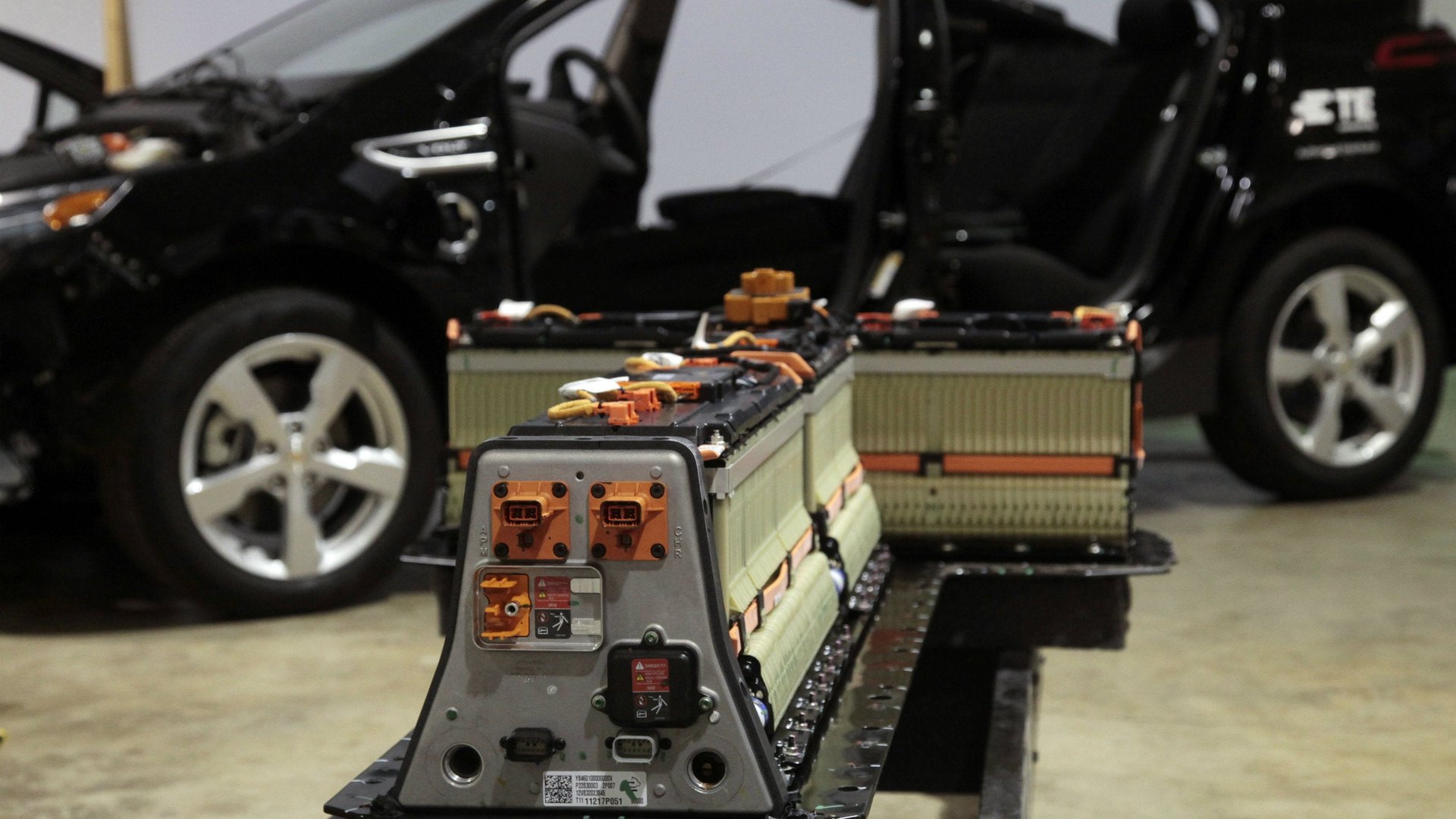The physics that killed GM’s latest hopes for a 200-mile electric car
Stubborn physics problems underlie the recent collapse of a deal to power a 200-mile electric car for General Motors—an attempt to commercialize what many researchers consider the world’s most promising lithium-ion technology.


Stubborn physics problems underlie the recent collapse of a deal to power a 200-mile electric car for General Motors—an attempt to commercialize what many researchers consider the world’s most promising lithium-ion technology.
GM has canceled a contract with Envia Systems, a Silicon Valley startup. The automaker accuses Envia of overstating how much progress it had made on a lithium-ion battery intended for a 2016-model electric car. But the deal would probably still be alive had Envia managed to stop the battery’s electrodes from shattering and transmogrifying during the charge-discharge process.
The Envia battery combines two electrodes that, at the laboratory scale, are a powerful combination: a silicon-carbon anode and a cathode made of an exotic configuration of nickel, manganese and cobalt (NMC). Both electrodes have problematic physics.
The anode tends to pulverize after a few dozen charge-discharge cycles because the silicon swells three or four times its normal size during charging. But more recent attention (pdf) has focused on fixing the NMC cathode, a standout electrode whose theoretical capacity surpasses anything currently on the market.
Michael Thackeray, a researcher at Argonne National Laboratory who led the cathode’s invention, said that the material becomes erratic when the battery is charged at 4.5 volts or more. Its atoms shift around and settle into continually differing juxtapositions, he said, making its performance inconsistent. But that’s the voltage necessary to produce the high performance that attracted GM to Envia. When the cathode is jolted with 4.5 volts or greater, it “activates” the metals, Thackeray says, resulting in an extraordinary increase in capacity.
“We are fighting an intrinsic problem. The material has high capacity but is unstable,” Thackeray said.
At laboratory scale, Thackeray’s material shows theoretical capacity of 250-280 milliamp hours per gram, a measure of how many electrons can be stuffed into the cathode. If that capacity could be carried through to the large battery packs contained in an electric car, it would far eclipse the 150 milliamp hours per gram delivered by lithium-cobalt-oxide, the cathode contained in most laptops and smartphones.
But Thackeray said studies show that the NMC atoms simply cannot be tamed at high voltages. “A solution will be found,” he says, and could get the cathode to 200 milliamps per gram, still better performance than its rivals. It would be better, for instance, than the nickel-cobalt-aluminum cathode contained in the high-end Tesla S, which has a problem with “life and safety,” he said.
“But for stability we will have to back off the high capacities,” Thackeray said.